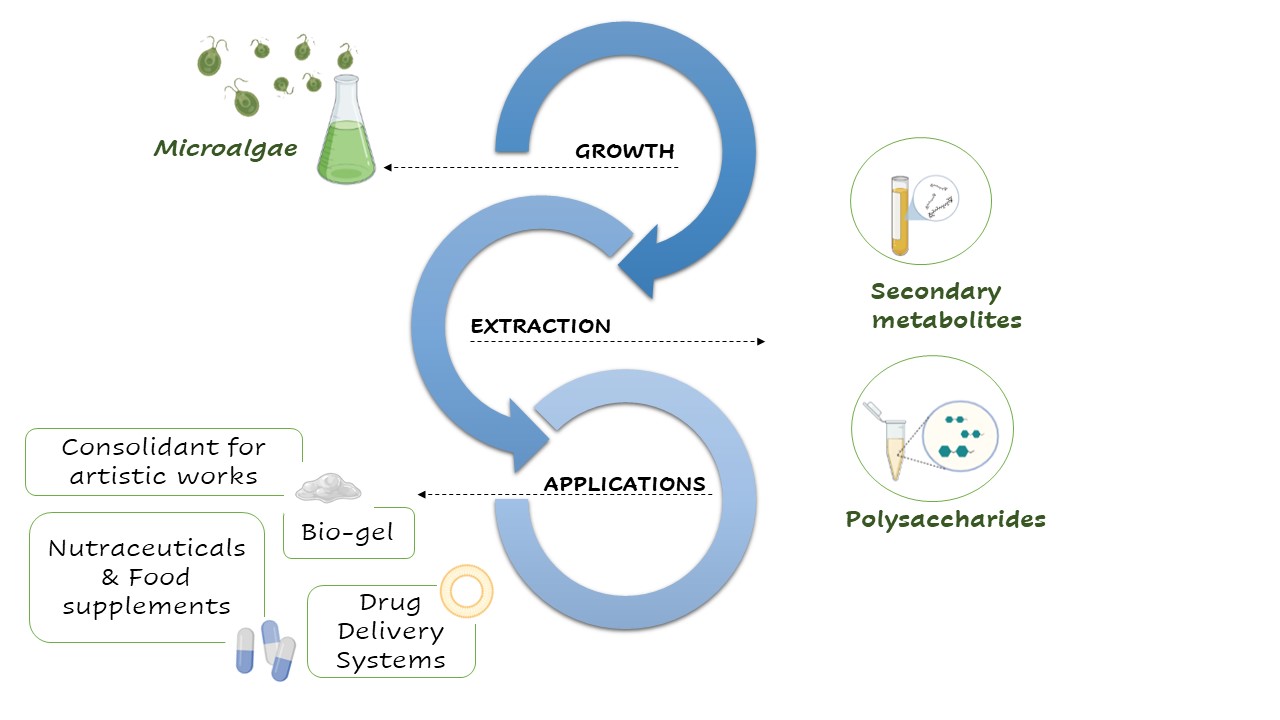Microalgae Laboratory

The research activity is focused on the study of the single-celled microalga Chlamydomonas reinhardtii (e.g., growth and physiological characterization). In particular, the experiments aim at the production of algal biomass for applications in the cultural heritage, environment and health sectors.
The microalgae Chlamydomonas reinhardtii represents a model system that over time allowed to reveal many information on the photosynthetic and metabolic processes of plants and eukaryotes. Furthermore, numerous studies demonstrated its great potential as Bio-Farm of molecules with strong commercial interest and positive impact on human health. This is the frame in which fits the research activity of the Microalgae Laboratory, in which different strains (wild type and mutant) of C. reinhardtii are grown (on a small and large scale), monitored/characterized from the physiological point of view (curve of growth, fluorescence and chlorophyll content) for the: i) extraction of secondary metabolites of significant nutraceutical interest (e.g., carotenoids and xanthophylls); ii) extraction of polysaccharide mixtures used in the conservation and restoration of polymaterial artistic works, and in general, for the development of innovative materials not harmful to humans and environment (e.g., bio-gel and drug delivery system) thanks to their important properties, such as biodegradability and biocompatibility; iii) toxicity tests on innovative materials used in green building.
Another important research activity of the microalgae laboratory concerns the identification of extraction and purification protocols of the compounds of interest through sustainable methods from an environmental and economic point of view.
– Antonacci, A*., Bertalan, I., Giardi, M. T., Scognamiglio, V., Turemis, M., Fisher, D., & Johanningmeier, U. (2021). Enhancing resistance of Chlamydomonas reinhardtii to oxidative stress fusing constructs of heterologous antioxidant peptides into D1 protein. Algal Research, 54, 102184.
– Scognamiglio, V., Giardi, M. T., Zappi, D., Touloupakis, E., & Antonacci, A*. (2021). Photoautotrophs–bacteria co-cultures: Advances, challenges and applications. Materials, 14(11), 3027.
– Antonacci, A*. & Scognamiglio, V. (2020). Biotechnological advances in the design of algae-based biosensors. Trends in biotechnology, 38(3), 334-347.
– Antonacci, A., Celso, F. L., Barone, G., Calandra, P., Grunenberg, J., Moccia, M., … & Scognamiglio, V. (2020). Novel atrazine-binding biomimetics inspired to the D1 protein from the photosystem II of Chlamydomonas reinhardtii. International Journal of Biological Macromolecules, 163, 817-823.


